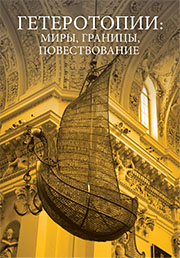Гетеротопия одного стихотворения («Пляска» Н. Асеева как балто-славянский текст)
Heterotopia of One Poem (“Pliaska” by N. Aseev as a Balto-Slavonic Text)
Author(s): Serguey PreobrazhenskySubject(s): Phonetics / Phonology, Lexis, Semantics, Belarussian Literature, Bulgarian Literature, Polish Literature, Russian Literature, Ukrainian Literature, Theory of Literature
Published by: Vilniaus Universiteto Leidykla
Summary/Abstract: The situation of heterotopia naturally appears in the areas in which multinational cultural and historic context creates premises for ambiguous choice of interpreting the message text, i.e., the areas where the common interpretative convention does not exist. Such premises have been a typical peculiarity of some parts of Central Europe, since the moment of the formation of national civilization structures up to the present time. In frontier areas the relations between centre and periphery are more complicated than the binary centric model “centre – outskirts” which presupposes reproducing the messages of the centre in terms of outskirts. The article deals with the application of the concept ‘heterotopia’ to the field of metric and semantic analyses of rhythmically ambiguous and semantically vague texts. As an example N. Aseev’s poem “Pliaska” (“Folk Dance”) is under consideration. The poem is of interest due to its rhythmical characteristics, as well as to its content and lexical choice, including that of proper names, which indicate the author being influenced by poetical and historic realia of Balto-Slavonic border areas (“kresy” in the Polish language). The poem is analysed in a wide context of Slavonic (Russian, Ukrainian, Belarusian, Bulgarian and Polish) poetry. The paper also touches upon a Slavonic versification universalia, the so-called hexasyllabic verse consisting of two (rarely three) phonetic words. Such type of verse in the context of Russian poetry is usually regarded as exclusively Ukrainian by its origin and as a bright sign of stylization of this kind. The article proposes another interpretation of hexasyllabic verse, namely as a sign of Balto-Slavonic heterotopia.
Journal: Literatūra
- Issue Year: 57/2015
- Issue No: 5
- Page Range: 238-245
- Page Count: 8
- Language: Russian

